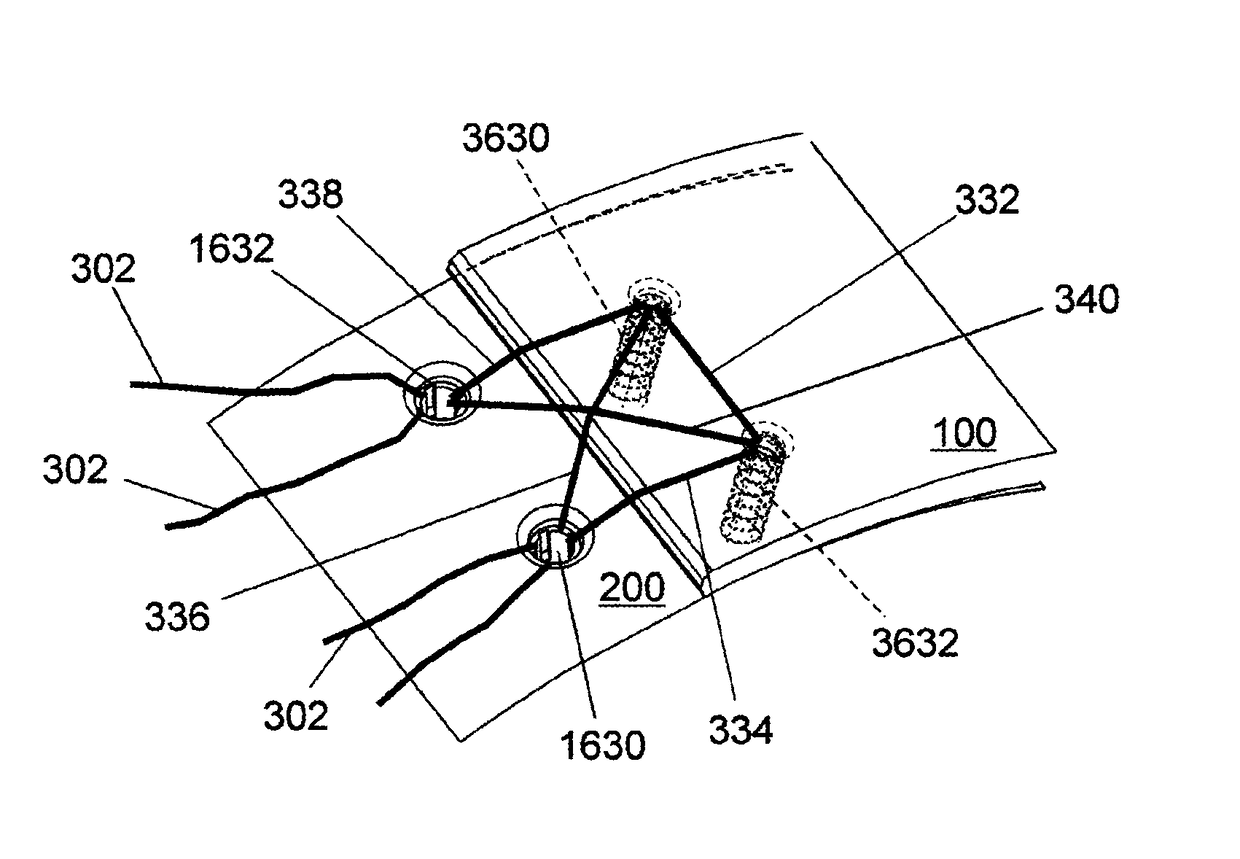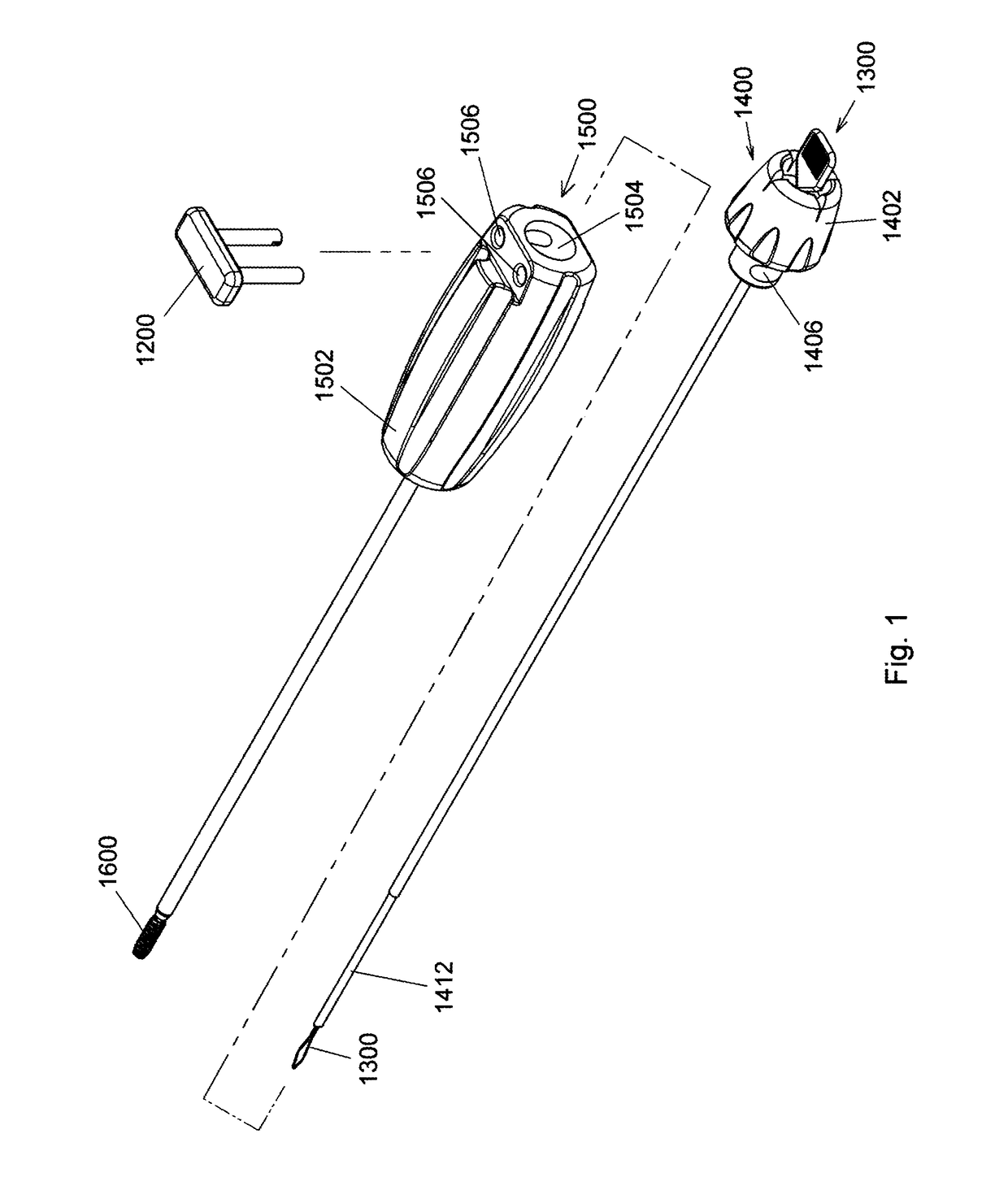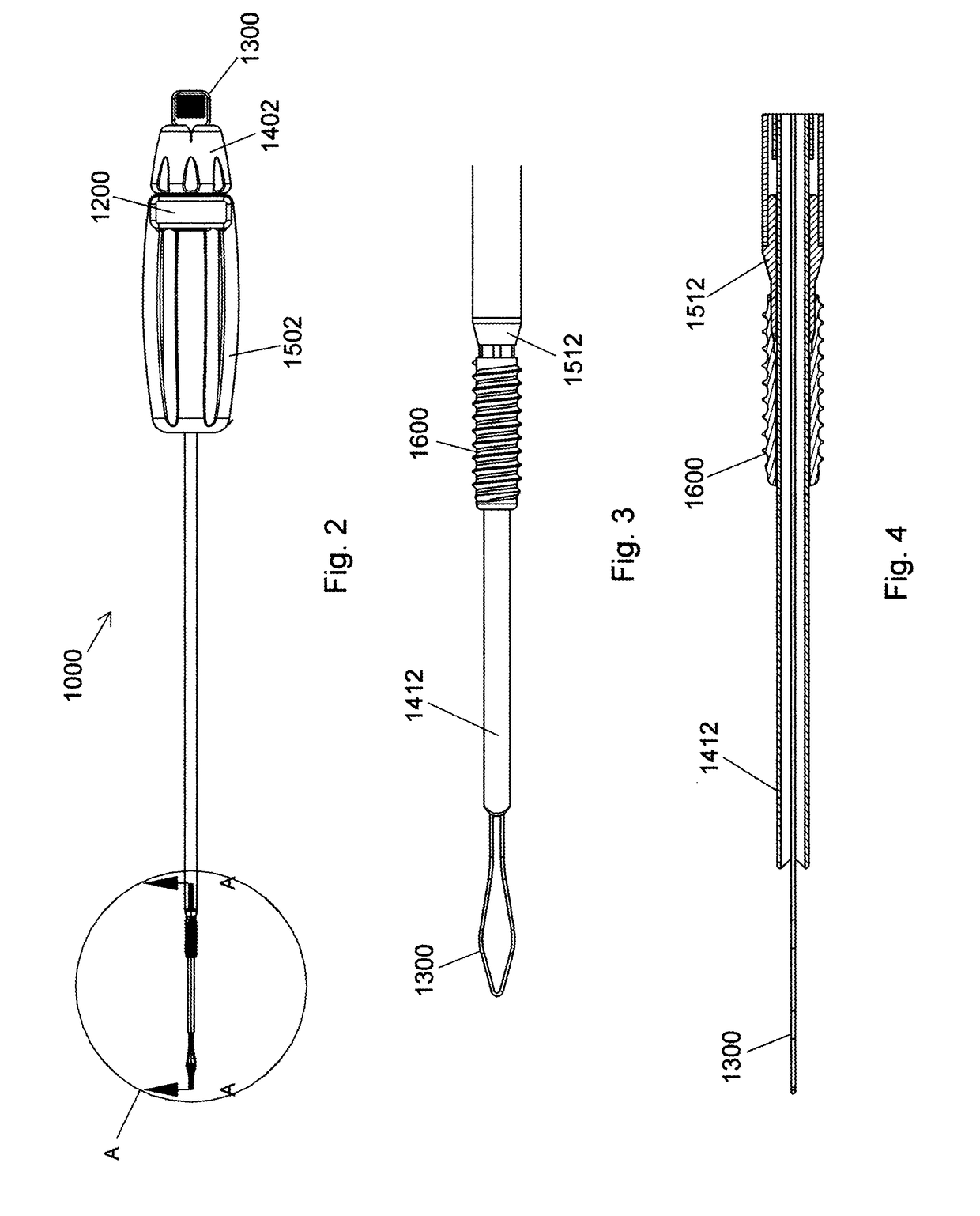Multiple implant constructions and fixation methods associated therewith
a multi-implant construction and implant technology, applied in the field of endoscopic and arthroscopic surgery and suture anchor system, can solve the problems that the suture tensioning and the establishment of the graft position cannot be accomplished using the driver's distal end, and achieve high tensile strength, high degree of toughness, and high tensile strength
- Summary
- Abstract
- Description
- Claims
- Application Information
AI Technical Summary
Benefits of technology
Problems solved by technology
Method used
Image
Examples
examples
[0157]FIG. 1 depicts driver 1500 with anchor 1600 loaded thereto, tensioning (insertion) device 1400 with loading loop 1300 positioned for loading a suture, and key 1200 prior to mounting of driver 1500 to tensioning device 1400 in preparation for use. When driver 1500 is mounted to tensioning device 1400, off-axis slots 1406 of handle 1402 of tensioning device 1400 are aligned with off-axis holes 1506 of handle 1502 of driver 1500 and cylindrical portions of key 1200 are inserted into the passages so formed. Positioning of key 1200 in this manner prevents axial and rotational movement of tensioning device 1400 relative to driver 1500. FIGS. 2 through 8 depict knotless suture anchor system 1000 of the instant invention prepared for use with key 1200 and loading loop 1300 in place. Distal tubular element 1412 of tensioning device 1400 extends distally beyond anchor 1600 and distal driving element 1512 of driver 1500. Detailed descriptions of the construction and use of placement syst...
PUM
 Login to View More
Login to View More Abstract
Description
Claims
Application Information
 Login to View More
Login to View More - R&D
- Intellectual Property
- Life Sciences
- Materials
- Tech Scout
- Unparalleled Data Quality
- Higher Quality Content
- 60% Fewer Hallucinations
Browse by: Latest US Patents, China's latest patents, Technical Efficacy Thesaurus, Application Domain, Technology Topic, Popular Technical Reports.
© 2025 PatSnap. All rights reserved.Legal|Privacy policy|Modern Slavery Act Transparency Statement|Sitemap|About US| Contact US: help@patsnap.com



